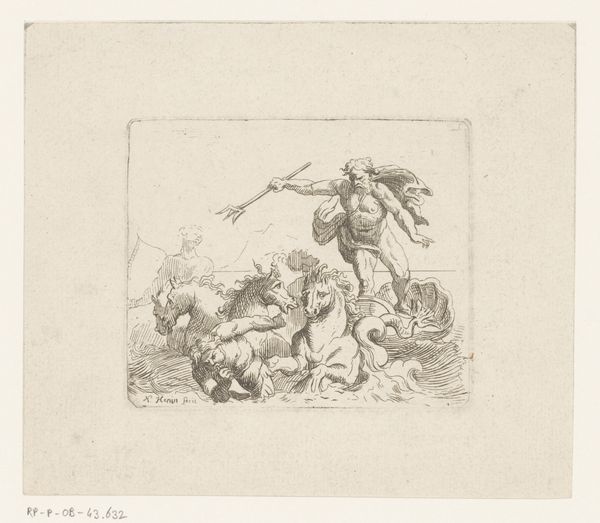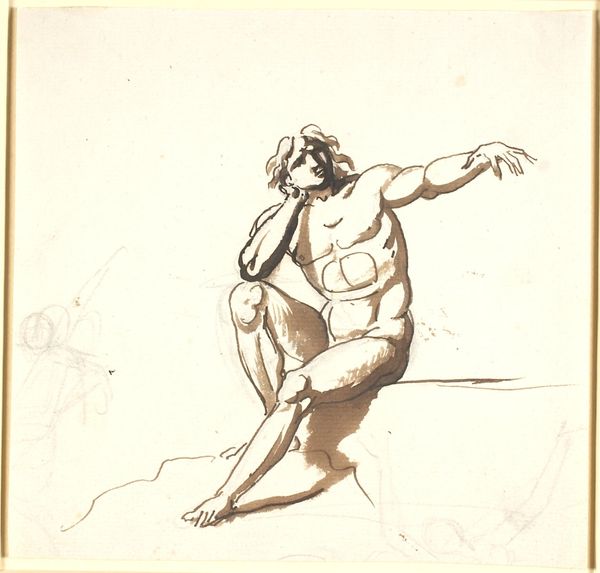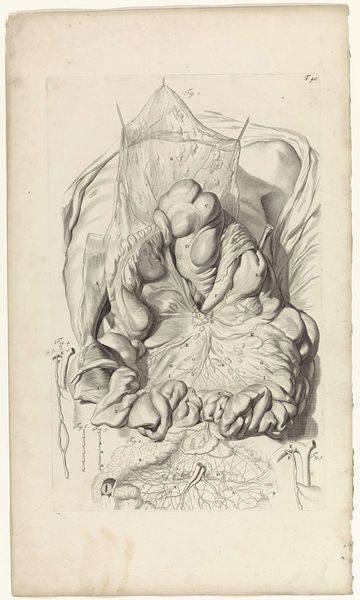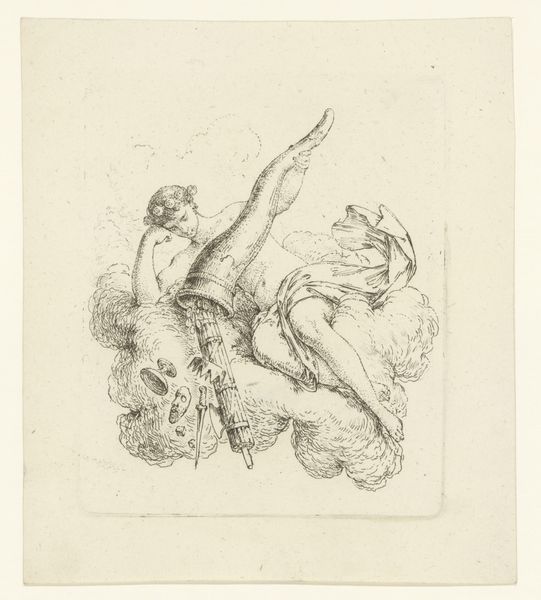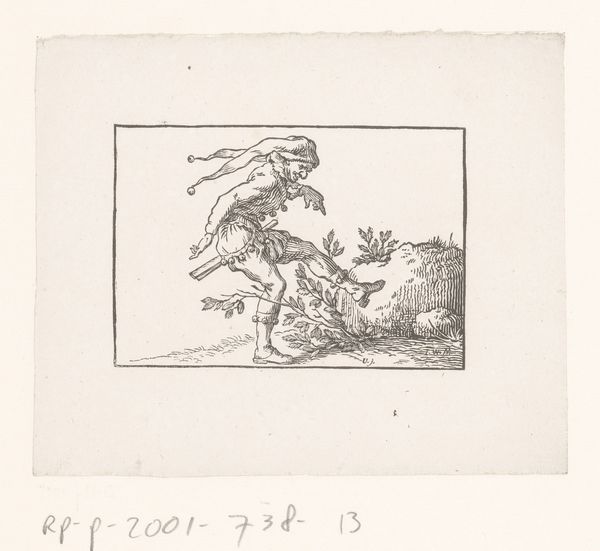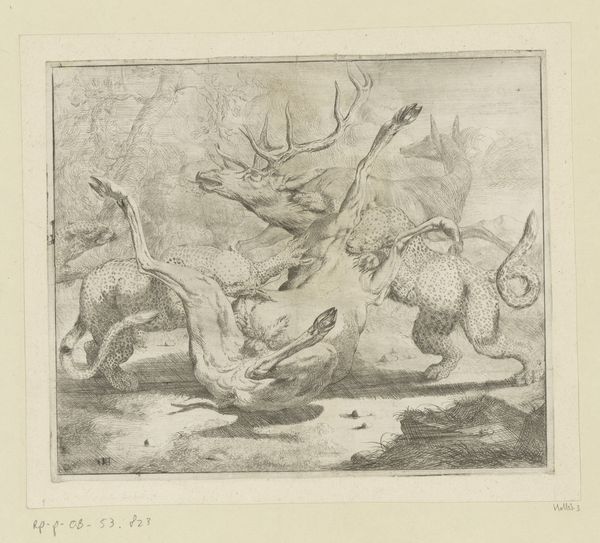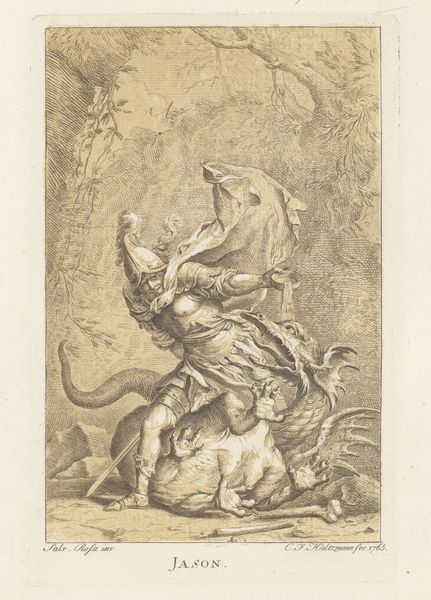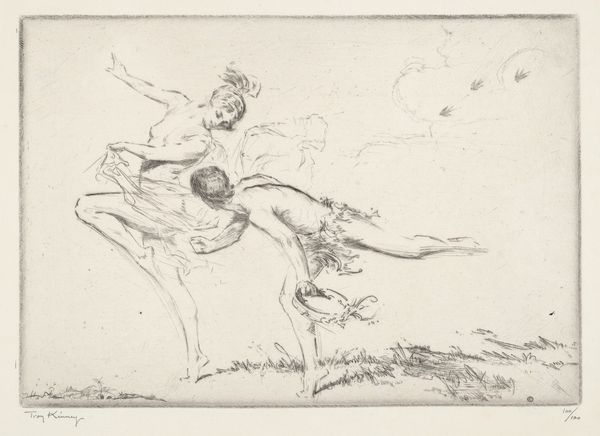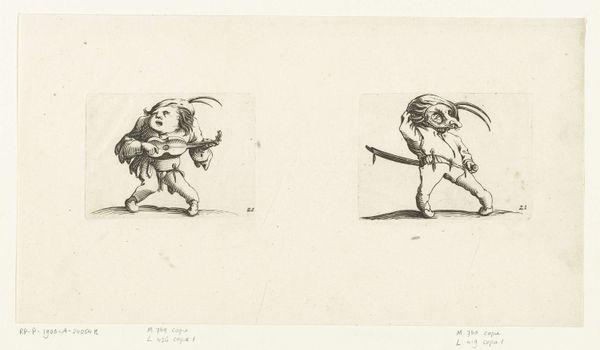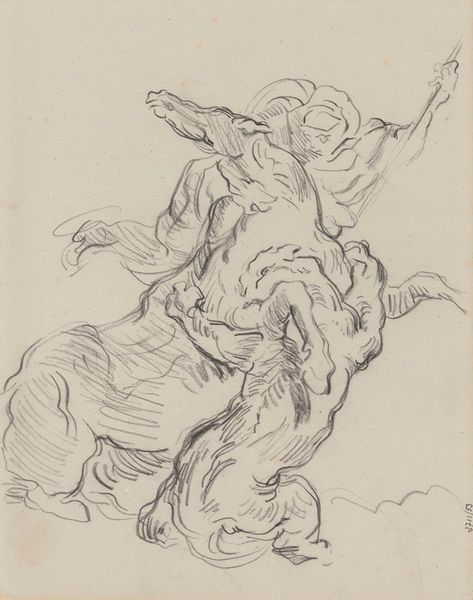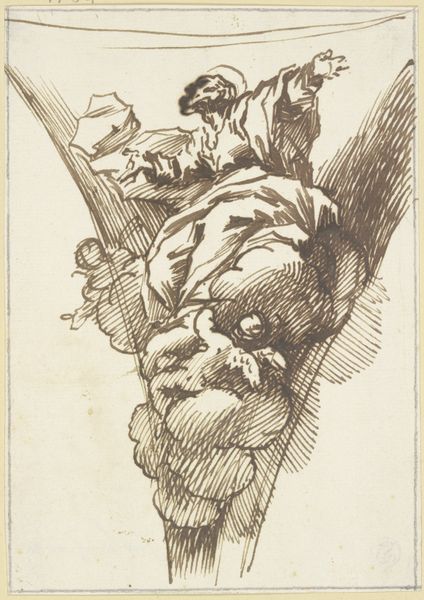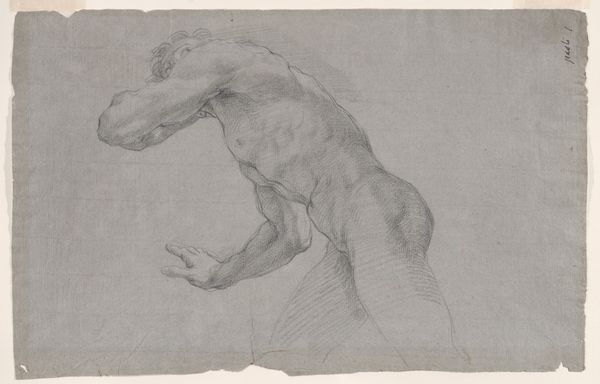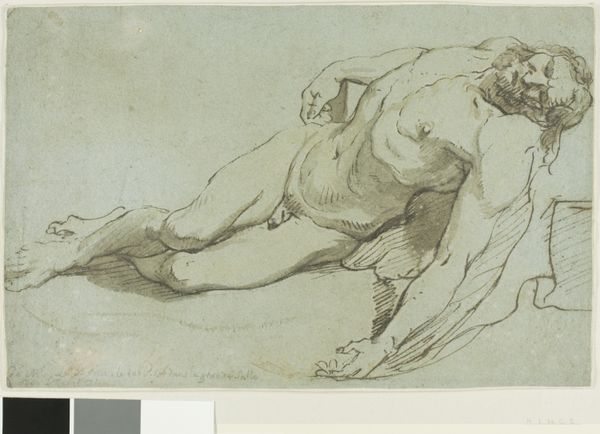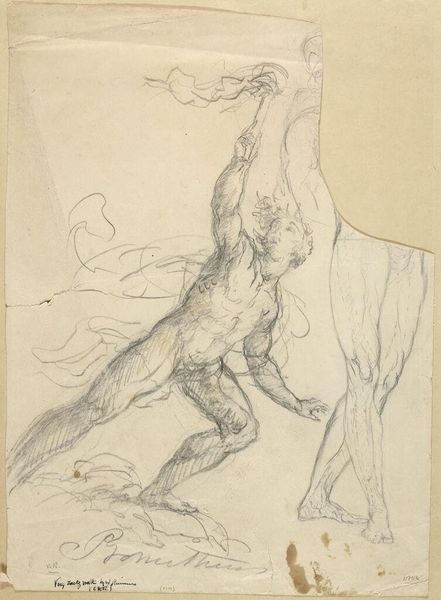
print, etching
#
ink drawing
#
allegory
#
baroque
# print
#
etching
#
old engraving style
#
figuration
#
erotic-art
Dimensions: height 164 mm, width 208 mm
Copyright: Rijks Museum: Open Domain
Editor: Here we have "Cupido geselt een sater, mogelijk Pan," or Cupid scourging a satyr, possibly Pan. It's an etching, so a print, made sometime between 1620 and 1708 by Lorenzo Nelli. The detail is remarkable, even though the overall impression is quite… playful, almost mischievous. How do you interpret this work? Curator: It strikes me immediately as an allegory, that common device of the Baroque era. Note Cupid's dominance—traditionally he’s associated with love and desire. Yet here, he inflicts pain. What might that tell us about love and desire, and their relationship to power, within the cultural memory this artist inhabits? Editor: That's fascinating! So, Cupid, a symbol of love, is acting violently. Is the satyr a symbol, too? Curator: Absolutely. The satyr, often identified with Pan, represents base instincts, raw sexuality, the untamed. Observe how he's bound; notice Cupid's whip. Think of this image as a visual debate: is passion something to be controlled, even punished? Or is Cupid, in his cruelty, merely a reflection of humanity's complex, and often conflicted, relationship with its own desires? What echoes of earlier myths or stories do you sense here? Editor: I guess I see a bit of the restraint versus indulgence conflict. Maybe even the mind versus the body? I never considered that symbols could have such complex and sometimes contradictory meanings. Curator: Precisely. Art is rarely a simple declaration. It is a conversation, an inquiry, a struggle with meaning itself. What does this etching provoke in *you* to consider, in your experience? Editor: I see what you mean. I think I will never look at Cupid the same way again. Thanks for opening my eyes. Curator: And thank you for your fresh perspective. Exploring these older works with newer eyes keeps those conversations going across centuries.
Comments
No comments
Be the first to comment and join the conversation on the ultimate creative platform.
